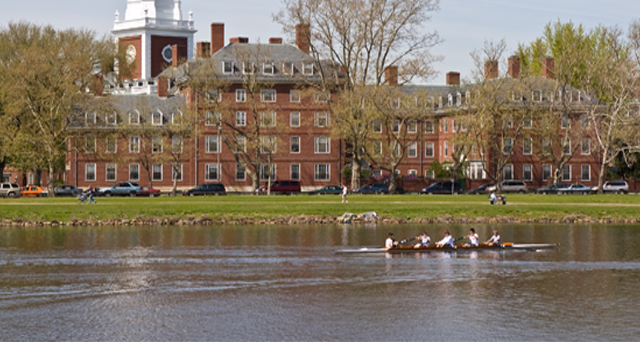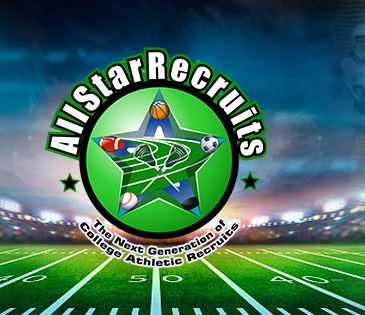
What you want to do, where you want to go….
The Search is On!
After you complete your Athletic and Academic Assessments Quizzes and have seeked feedback and advice from others, such as Coaches, Guidance Counselors, etc, you should have a pretty good idea of what level you may be able to compete at. If you haven’t heard me say it before, I’ll say it again….When building your target list of schools, academics should be the priority. In the event that you are not able to play lacrosse (for various reasons), you should be happy with the University you have selected.
Create Your Target List of Schools
You can start to build your target list of schools by using one of two approaches:
- The first is to go to AllStarRecruits.com/ncaa-division-i-ii-and-iii-schools-conference-and-region/ and find a list of the schools that offer your Sport, the level of competition, then research academic programs to see if there’s a match.
- The second is to find schools in a particular region, (maybe you want to stay in the Northeast), then look to see if a matching academic program. Either approach will lead you to the same conclusion, but academic considerations should be first and athletics second.
- Need more help? Go here https://allstarrecruits.com/the-college-search/ for more info and resources.
You can use the Targeted Schools List or use your own spreadsheet. You should include 10-15 schools. The list should include 1/3 “reach”, 1/3 “safety”, and 1/3 “target” schools. Add notes to the list including Pros and Cons, personal connections you may have, have you attended a camp that the coach was working, or maybe you have a family member who played on the team in the past. Do more research on your top picks. Use the College Information Worksheet and College Selection Worksheet to document your findings. This will help you narrow down your top choices.
As we mentioned above, your list should include 1/3 of “reach”, 1/3 “safety”, and 1/3 “target” schools. Let’s talk about what they are.
We’ll start with safety schools. A safety school can generally be described as a school to which you have an 80% or above chance of admission. It’s worth noting that this doesn’t necessarily mean schools that have above an 80% or above acceptance rate. Rather, it means schools for which your test scores, GPA, and extracurricular accomplishments exceed those of the typical applicant by a significant amount.
A target school is a school at which you have between a 20% and 80% chance of admission, or in other words, a school where your profile is generally similar to that of the typical student athlete. Again, a “20% to 80% chance of admission” is relative – a target school will be very different for a student with a 4.0 and a student with a 2.0.
Finally, we’ll discuss the most infamous of the three: the reach school. Any school at which you have less than a 20% chance at acceptance should be considered a reach school. In most cases, this could be defined as schools where the profile of the average admit exceeds yours to some extent.
However, in some cases, even if your profile is equal to or even greater than that of the average admit, you should still consider the school a reach. This is true primarily for extremely competitive schools, such as top D1 programs and Ivy’s, these schools receive so many qualified applicants that even those who meet the standards get turned away. Consequently, even the most competitive applicants should consider any school with an acceptance rate less than 15% or so a reach school.
Education Should be the Priority
For any college bound student-athlete, finding the right college takes research and careful consideration. As a busy Student-Athlete with a crazy schedule there is even more to think about than academics. Your first instinct may be to go where ever you may be able to get an Athletic Scholarship, but you need to look at the entire picture when selecting a college. After all, the primary reason for going to college is to get an education, so you want to look closely at the academic environment first. Competing in Your Sport, while it will be a worthwhile endeavor, should be secondary.
What to Consider When Choosing a College
There is no one perfect college. Finding the best college should be based on your own personal choice and not an arbitrary rating system. Do your own thinking and analysis. The best college should be the one that is the best fit for you. Some of the factors to consider when choosing a college are listed below. Some of the factors may be more important to you than others.
- Nonathletic Factors
- Location
- Proximity to home
- Climate, geography, demographics
- Campus environment
- Size of institution
- Housing
- Extracurricular activities
- Nature of students
- Academic environment
- Admission requirements
- Quality of courses and degree requirements
- Availability of your major
- Quality of faculty
- Cost
- Availability of scholarships/financial aid
- Graduation rate of Lacrosse Players
- Location
- Athletic Factors
- Availability of Lacrosse Scholarships
- Level of competition
- Time commitment, length of season
- Coaching Staff/Style
- Facilities
- Services
- Teammates
- Reputation of Team
An Alternative: Community College
So far we have reviewed the selection process for four year colleges. But if a four year college is not for you, then the next best alternative is to consider a community college.
Community Colleges (or junior college) are two year educational institutions. They are excellent alternatives allowing students two years to grow physically and socially and to improve their level of academic and athletic performance in a cost effective manner before continuing on to a four year degree. Community colleges can be the best answer for students who do not qualify for four year colleges because of eligibility requirements.
To help student athletes decide between a community college or four year college, you can ask/answer the following questions:
- Am I mature enough to go away from home, live and study on my own and make new friends, etc?
- Are my family’s finances sufficient to pay my college expenses? If not, what options are available for student loans and other financial assistance?
- Am I academically prepared? Can I compete scholastically at a four year college?
- Do I know what I want to major in? If not have I identified strong areas of interest?
- Can I compete in Lacrosse at the four year level based on my physical maturity, level of competition and skill level?
If you answered yes to all those questions, you may want to consider going to a four-year college.
Community colleges are often smaller than four year schools and offer extra support services. Their environment can feel more comfortable to students while they mature socially.
Cost is considerably less at a community colleges vs four year college. Community college tuition typically runs around $5,000 and if you live at home, you will not have the expense of room and board plus meal plans. Four year public colleges will typically run around $25,000 including room and board and books. Private colleges can get extremely pricey with some tuition upward of $60,000.
Other Alternative
Another alternative is to consider a post-graduate year at a private prep school rather than going straight to a four year college. For some kids it’s a good option. Prep schools give them an extra year to mature, both physically and academically before going to college. Prep schools focus on Academics and Athletics and many students are successfully placed in four year colleges after competing their post graduate year.
Now that you have assessed your Identified Your Mission and Created your Target List of Schools, it is time to proceed to







